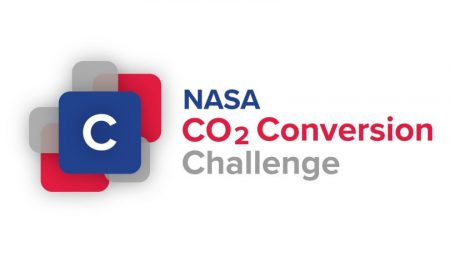September 9, 2018 – You would think that NASA, with its many Earth-observation satellites, and its research into our climate and the changes occurring, has launched a competition to help deal with carbon dioxide (CO2) because of the impact it is having on our planet. Wouldn’t that make sense? Finding a way to remove CO2 from the atmosphere and turn it into useful compounds.
But that’s not really what NASA has in mind with CO2 Conversion Challenge. What the goal is here is to take abundant CO2 found on Mars and turn it into useful resources for humans who go on missions there. What NASA wants those who take up the challenge is to replicate what plants do here, converting CO2 into useful biomaterials. Plants do it all the time to create their structures, and to be a primary feedstock for plant systems.
What NASA wants contest entries to do is come up with a conversion system to turn CO2 into glucose composed of carbon, hydrogen, and oxygen atoms. The abundance of CO2 in the Martian atmosphere is seen as a significant resource to be exploited. By abundance, of course, we mean an atmosphere that is more than 95% CO2, with minor amounts of argon, nitrogen, oxygen, water vapour, and other gases.
But the Martian atmosphere being 100 times thinner than that of Earth’s, means even though CO2 is the predominant gas, it doesn’t play the same role as it does on our home planet. Where CO2 in the Earth’s atmosphere creates a greenhouse effect, the Martian atmosphere with all its CO2 is far too thin, and the distance the planet is from the Sun means the amount of solar radiation falling on it is significantly less. So no greenhouse effect on Mars. Just a lot of CO2 floating around which NASA feels we need to exploit if we intend to have humans stay there.
NASA’s challenge comes in two parts. Teams that register by January 24, 2019, no later than 5:00 p.m. Central Time, are asked to submit a 750-word technical description of a proposed physiochemical process using CO2 as the sole carbon source, and converting it to acceptable forms of glucose. The contest is open to Americans, 18-years-old or higher, including residents of Puerto Rico with valid American citizenship. (Apparently, some Puerto Ricans don’t have the right citizenship papers and need to get them if they want to compete even though they are as a commonwealth of the United States, Americans).
NASA asks that contestants describe a CO2 conversion process that produces one of six types of sugar: D-Glucose (dextrose), 6-carbon sugars (hexoses), 5-carbon sugars (pentoses), 4-carbon sugars (tetroses), 3-carbon sugars (trioses), or glycerol.
None of the teams are going to Mars to get their CO2 so they can source it commercially right here on Earth or create it through electrolysis. NASA specifically is looking for solutions that are scalable to fit with space mission objectives and that produce the various sugars specified with high efficiency and without contaminants or toxic byproducts.
Submitted proposals will be vetted and scored. From the applicants, NASA will announce by April 10, 2019, which five proposals appear most promising and will award $50,000 U.S. to these applicants. They will then enter the second phase of the competition, to construct a demonstration technology as proof of concept. The final winner will receive a cash price amounting to $750,000.
States Monsi Roman, who is the Program Manager for this contest among many others that NASA is running under its Centennial Challenges Program, “Enabling sustained human life on another planet will require a great deal of resources and we cannot possibly bring everything we will need …. If we can transform an existing and plentiful resource like carbon dioxide into a variety of useful products, the space, and terrestrial applications are endless.” It’s nice to see the reference to “terrestrial” in this quote since most of us here on Earth face a significant carbon dioxide challenge of our own.
If you are unfamiliar with the Centennial Challenges Program being run by NASA’s Space Technology Mission Directorate, it invites citizen participation in solving significant Deep Space and off-world challenges. Initiated in 2005, it has been engaging the public to participate in advanced technology development and offering cash incentive prizes for new ideas and solutions. Among the past and current challenges listed by the Program are:
- 3D Printed Habitat Challenge – to create sustainable housing for Deep Space and off-world locations.
- Cube Quest Challenge -to design, build, and deliver small satellites for Deep Space missions.
- Space Robotics Challenge – to develop robotic software for NASA’s Robonaut 5 to be used in Deep Space missions to support human crews.
- Vascular Tissue Challenge – to develop metabolically functioning human vascular organ tissue in the laboratory.

















